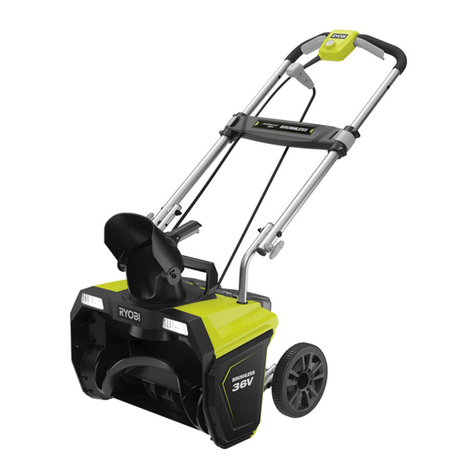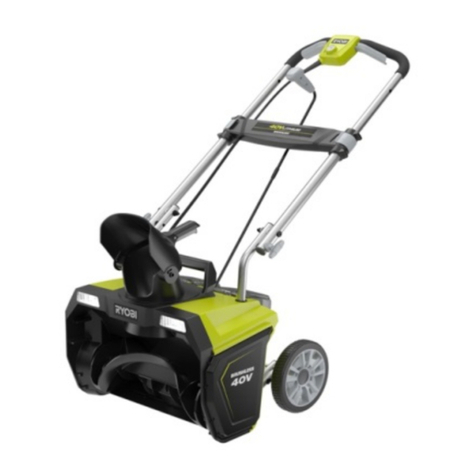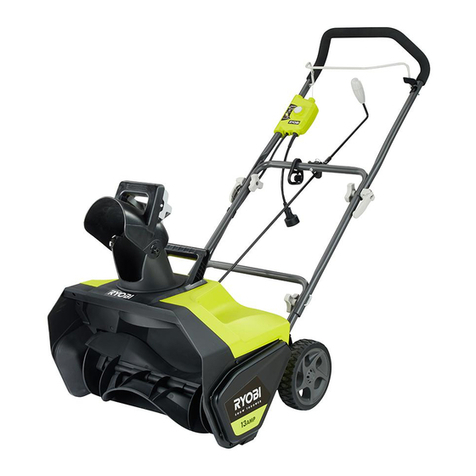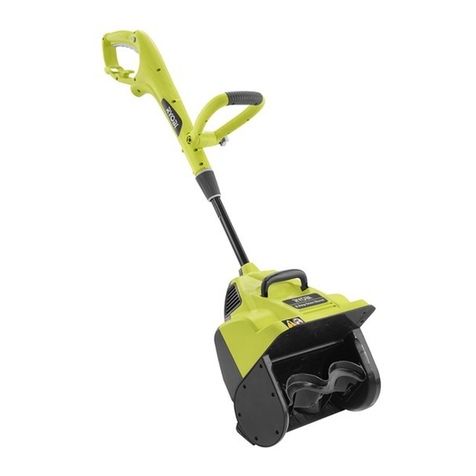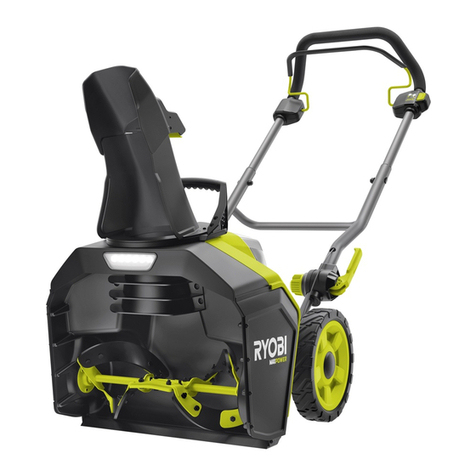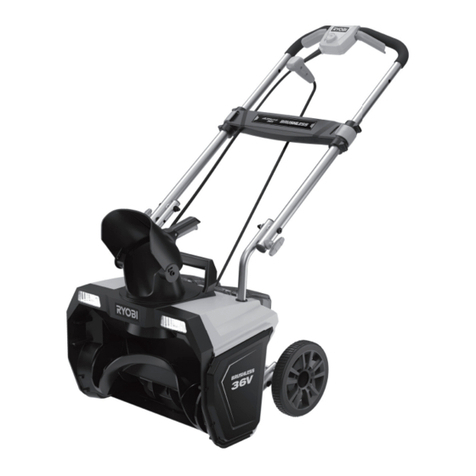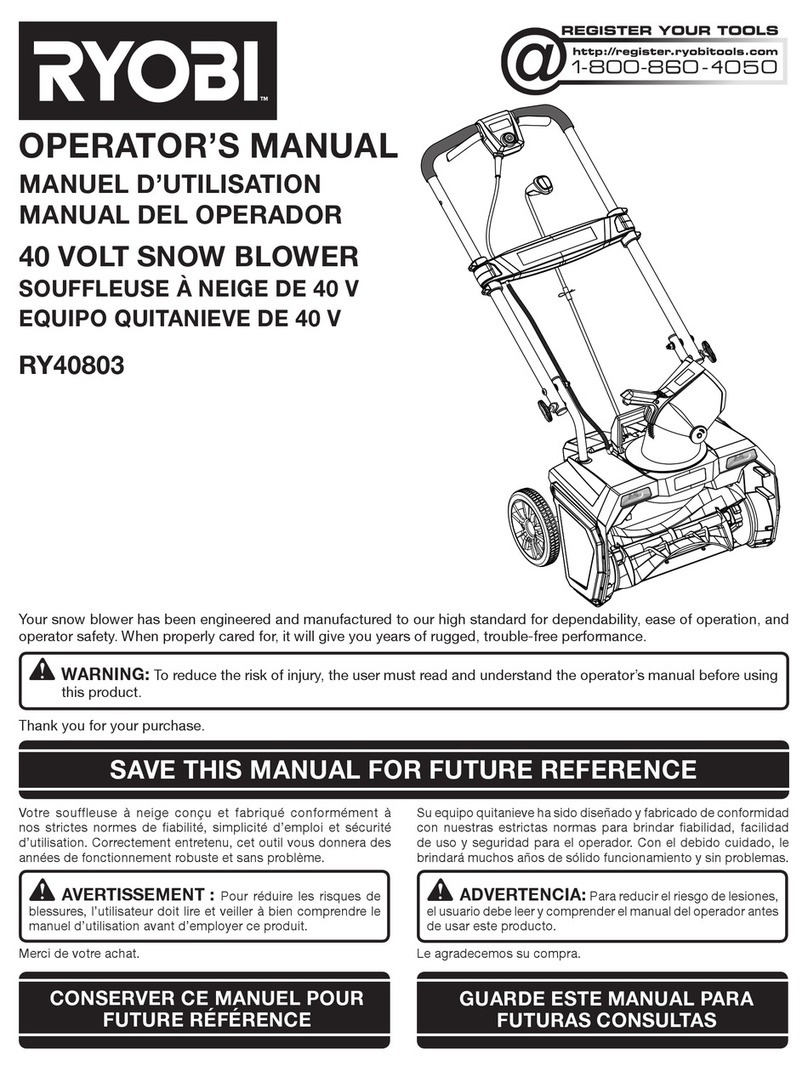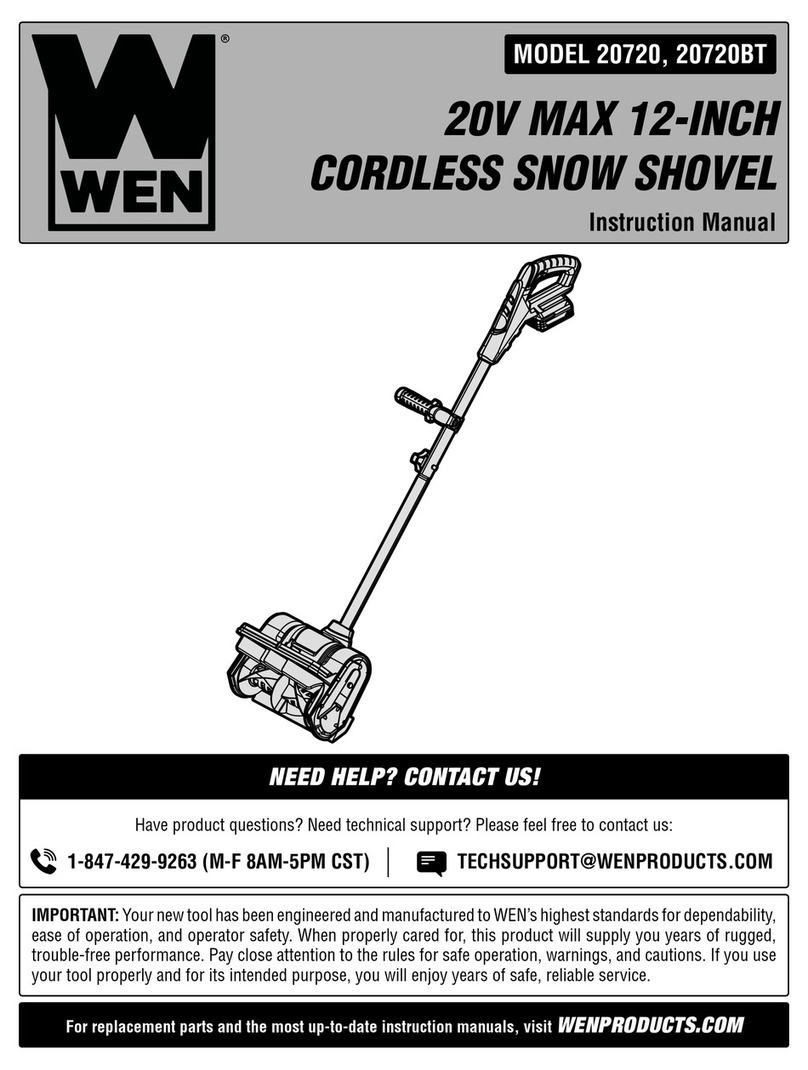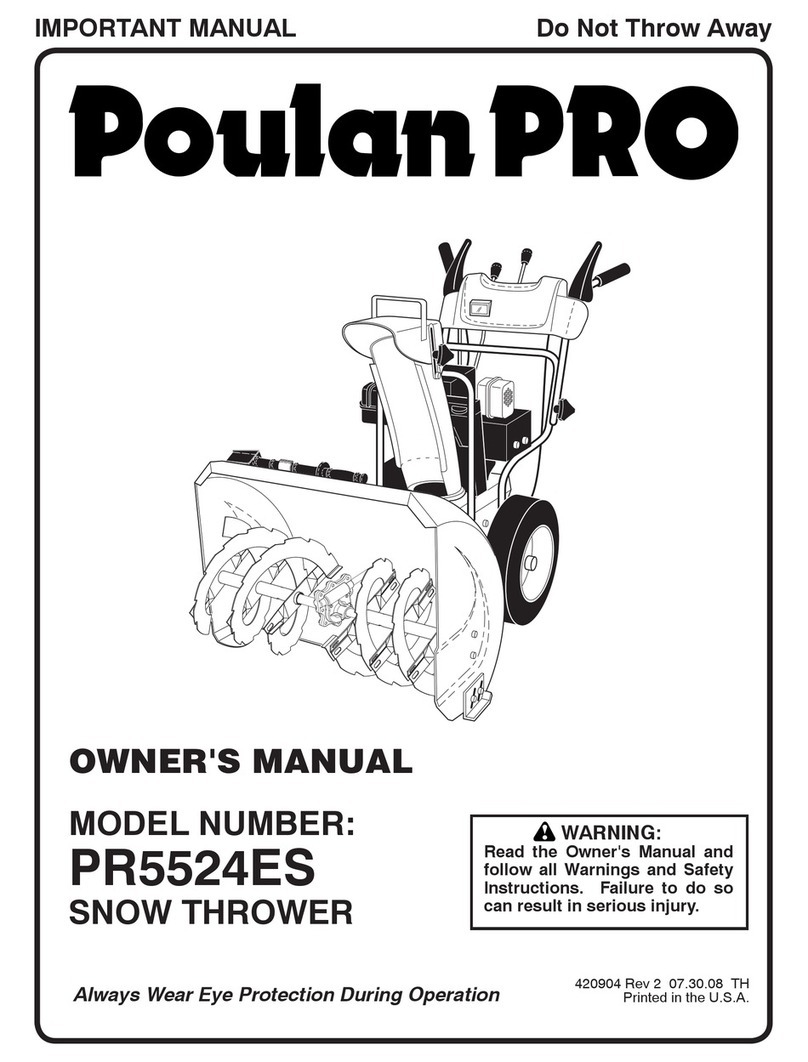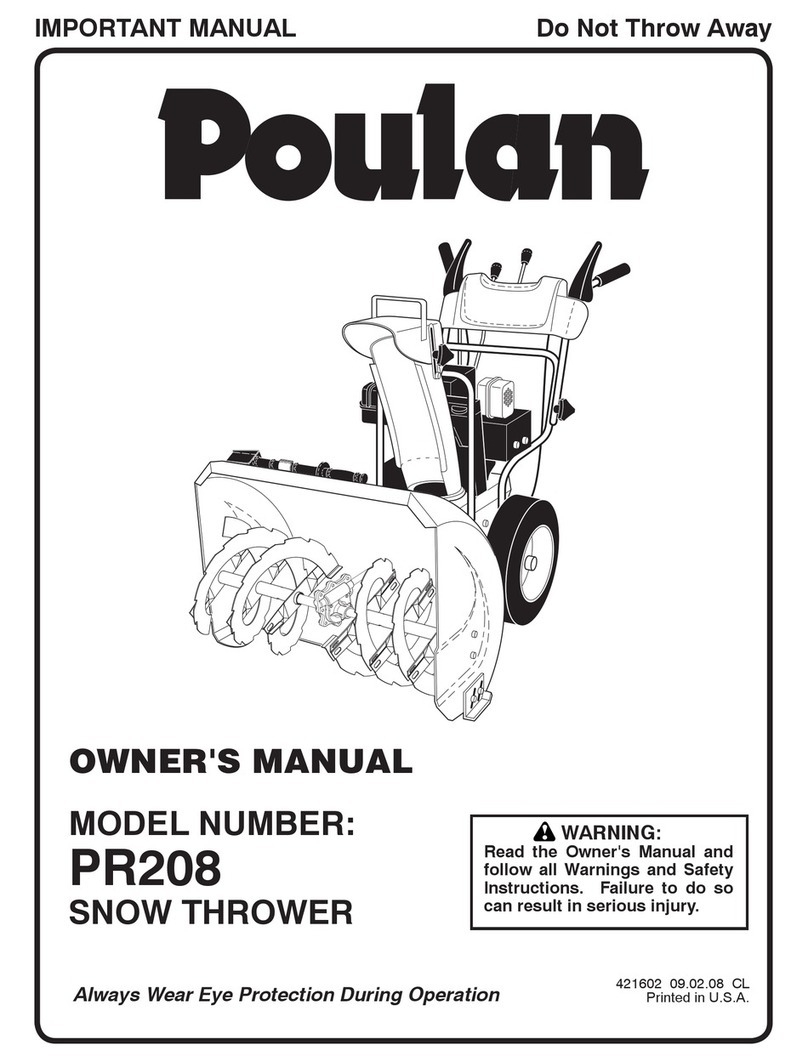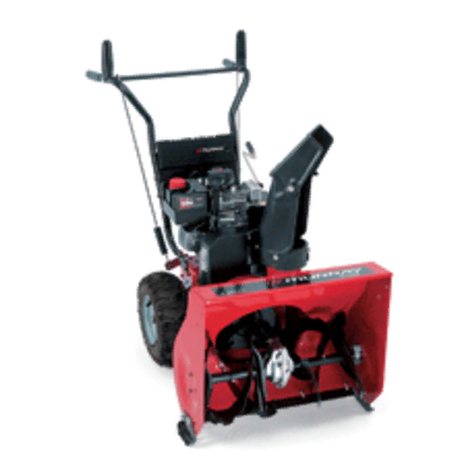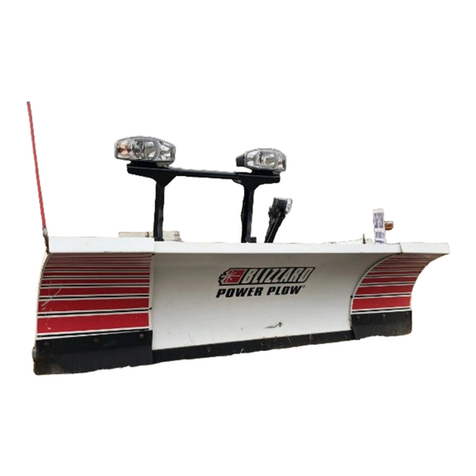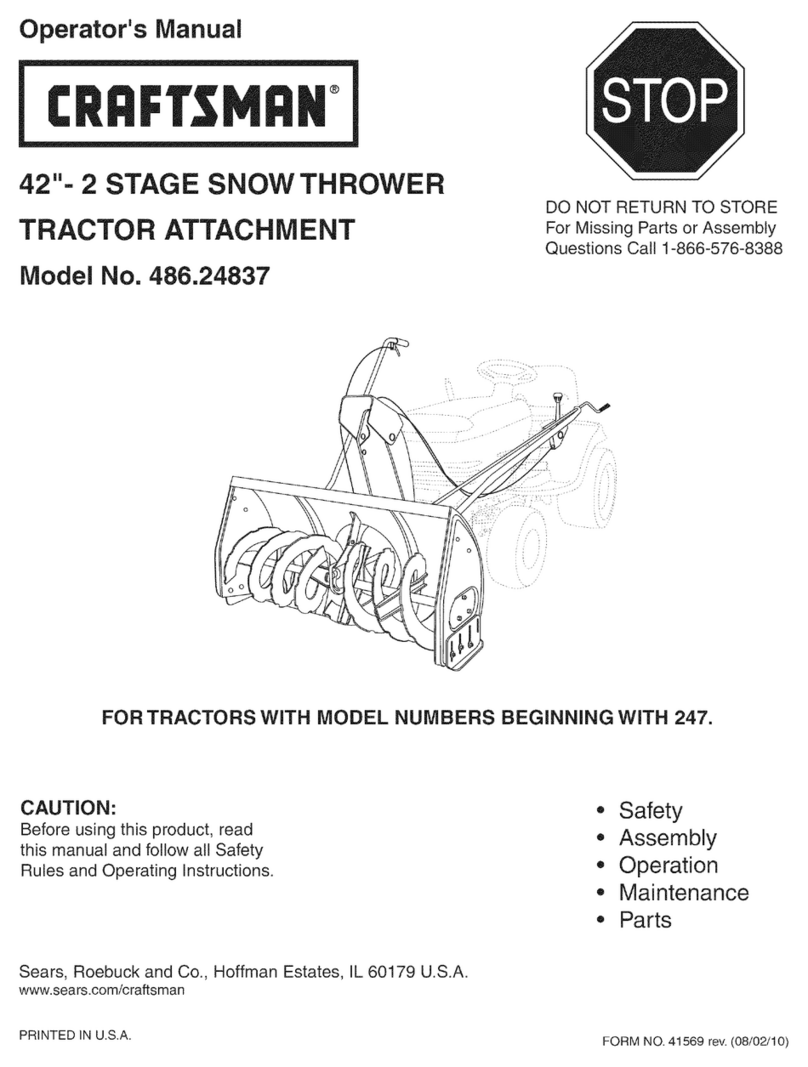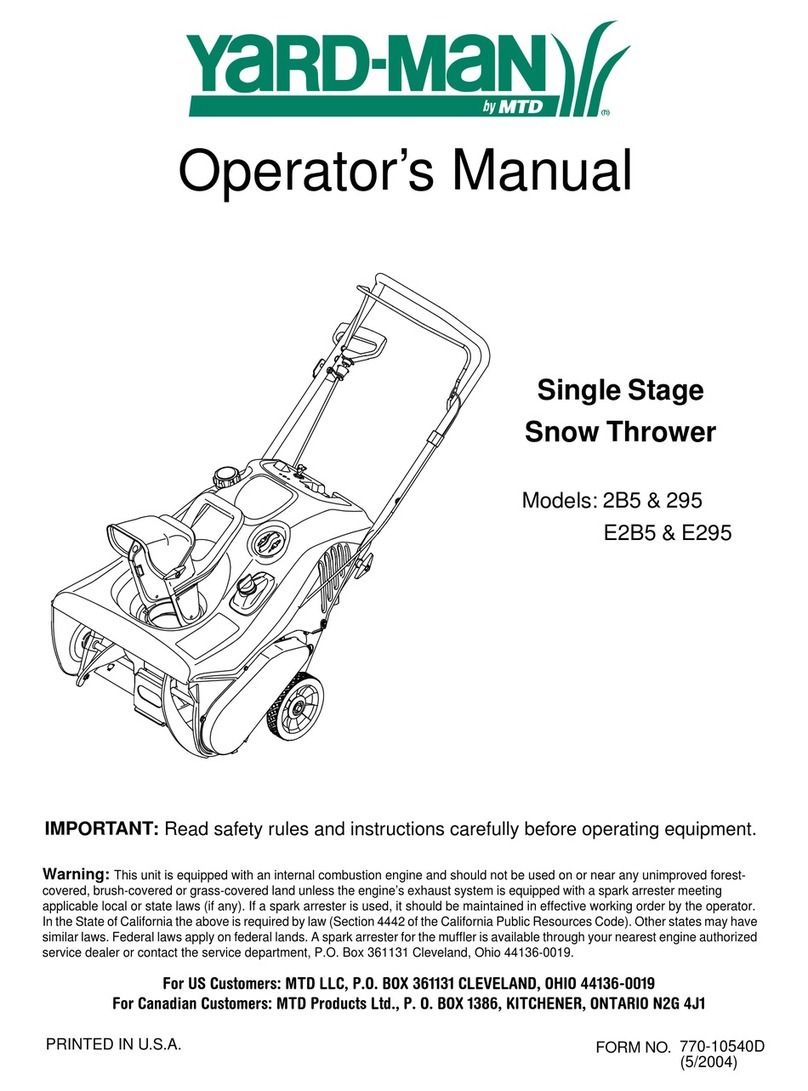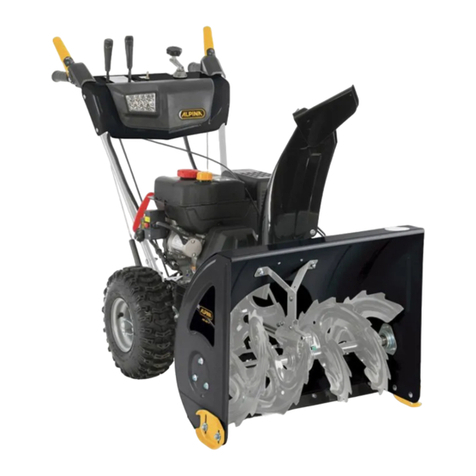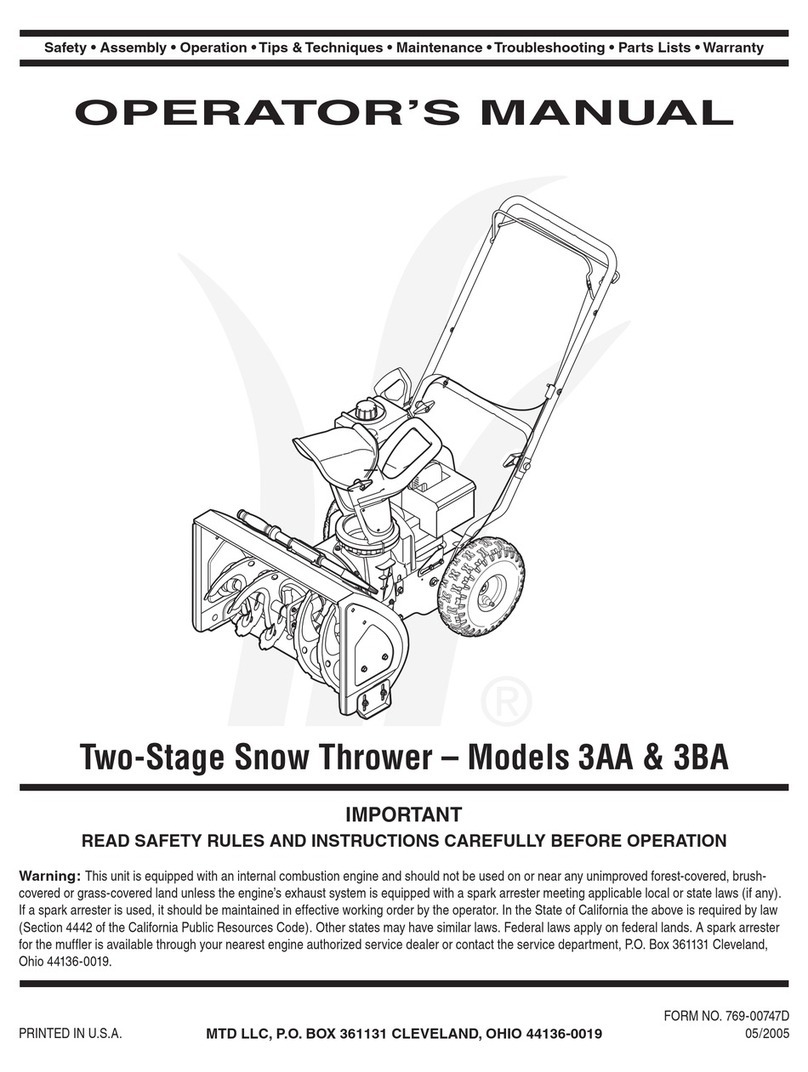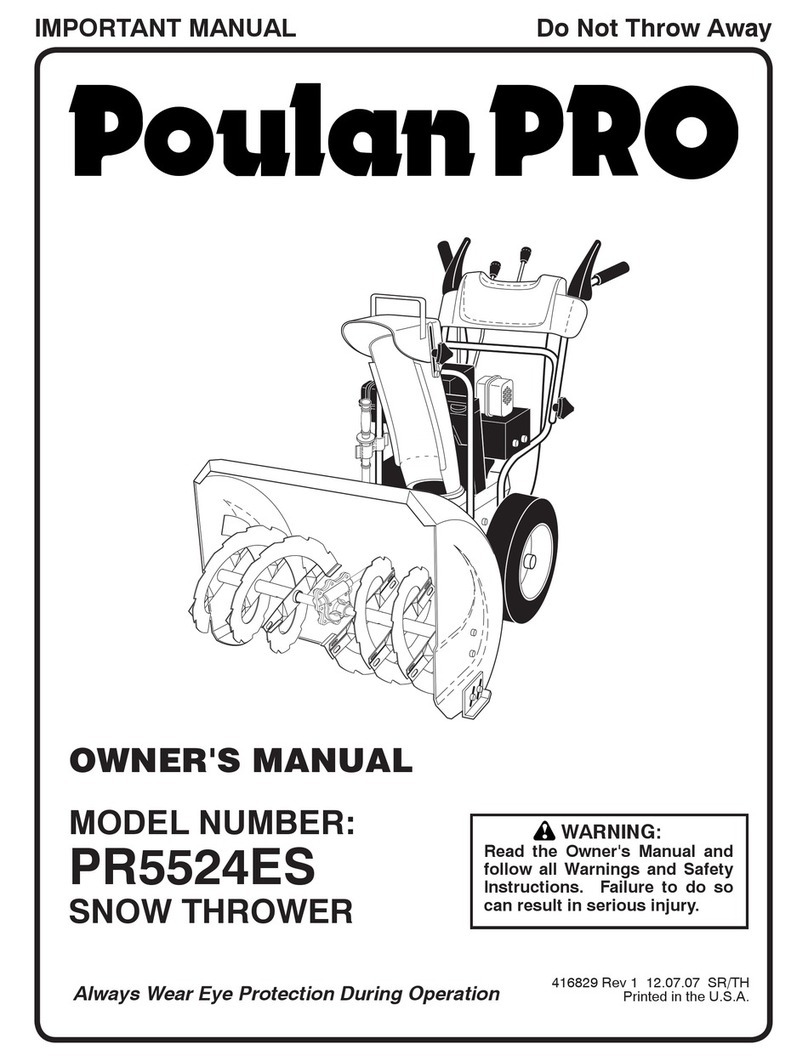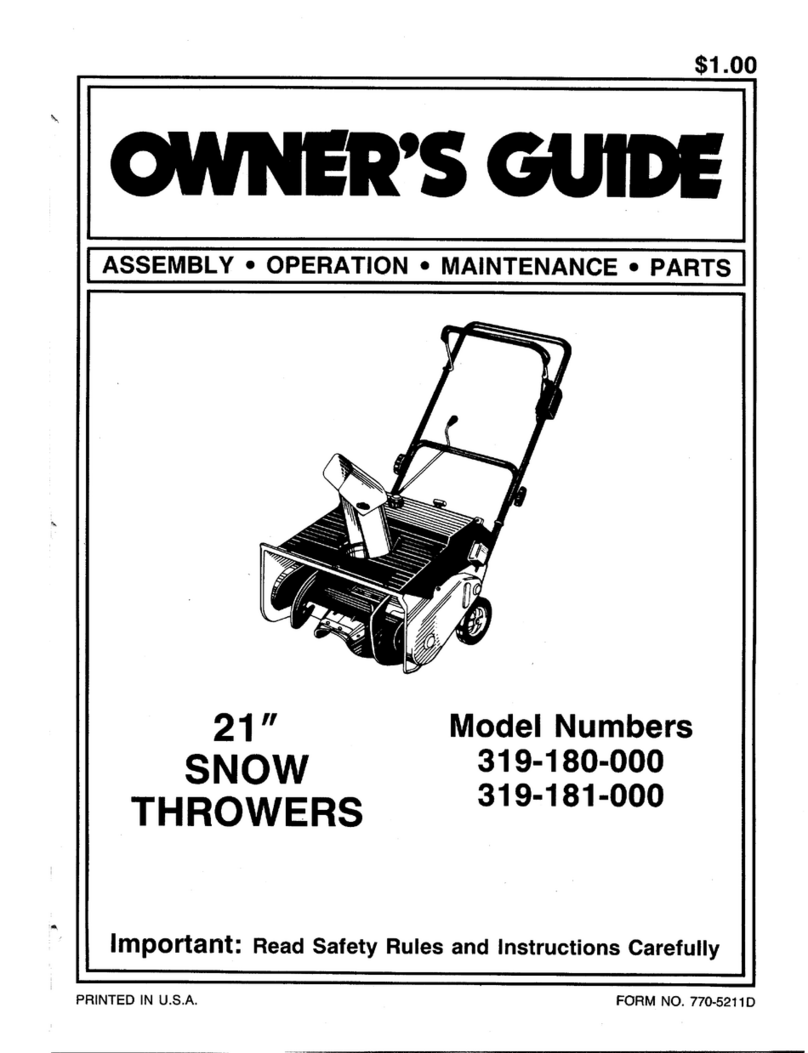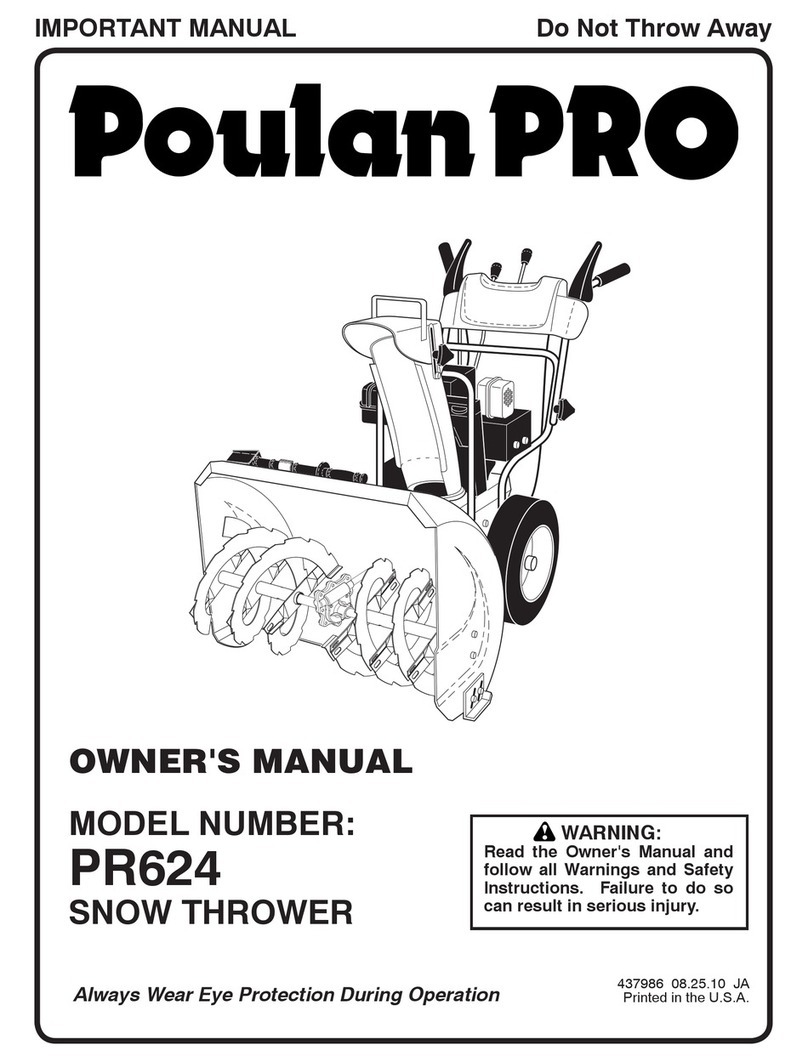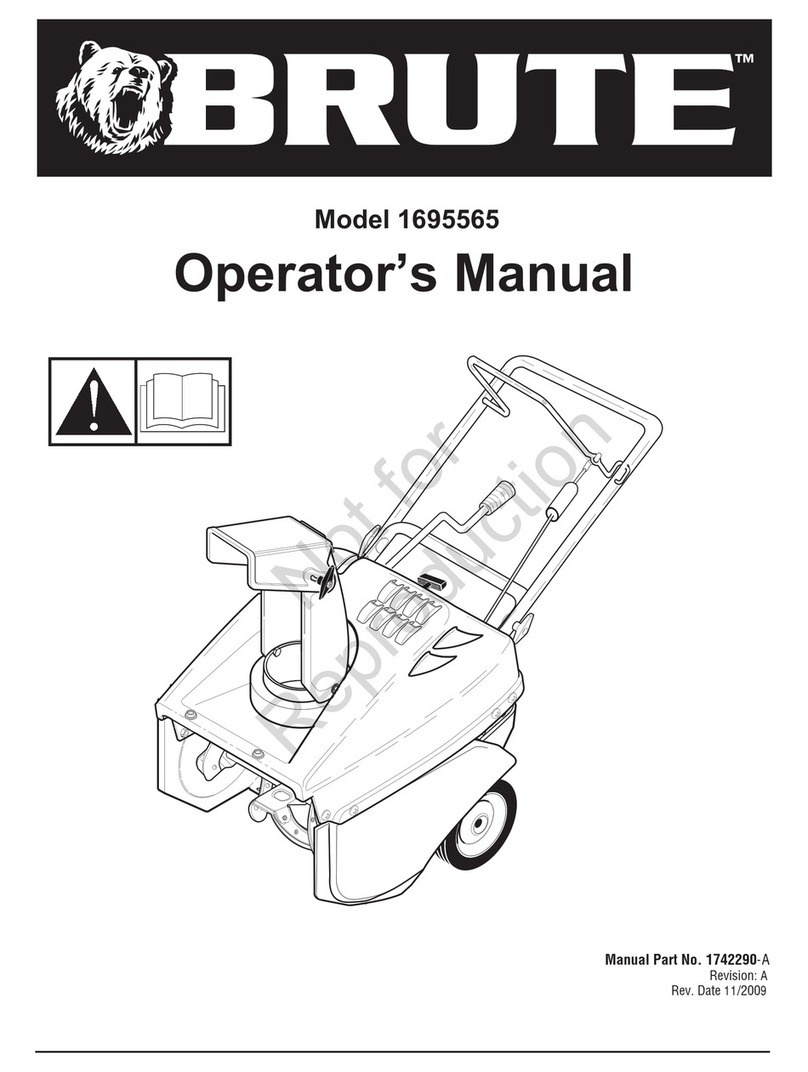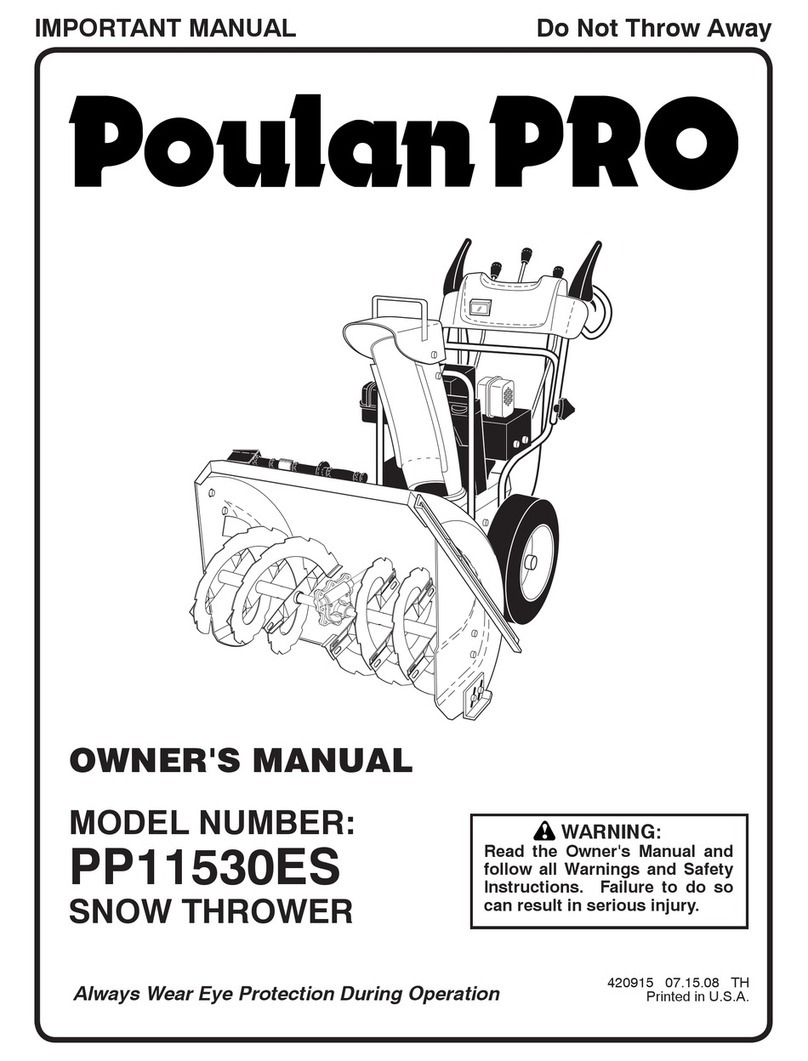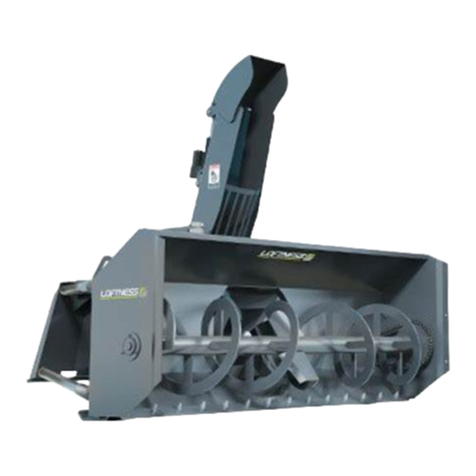
2 — English
WARNING:
READ AND UNDERSTAND ALL INSTRUCTIONS. Failure
to follow all instructions listed below and on the machine
may result in electric shock, fire, and/or serious personal
injury.
Know your snow blower. Read operator’s manual carefully.
Learn its applications and limitations, as well as the specific
potential hazards related to this snow blower. Following this
rule will reduce the risk of electric shock, fire, or serious
injury.
Do not permit children to use snow blower. It is not a toy.
Use only accessories that are recommended by the
manufacturer for your model described in this manual. Ac-
cessories that may be suitable for one snow blower may
create a risk of injury when used on another snow blower.
Use only as described in this manual.
Do not handle charger, including charger plug, and charger
terminals with wet hands.
Do not put any object into openings. Do not use with any
opening blocked; keep free of dust, lint, hair, and anything
that may reduce air flow.
Keep hair, loose clothing, fingers, and all parts of body
away from openings and moving parts.
Turn off all controls before removing battery.
Do not operate snow blowers in explosive atmospheres,
such as in the presence of flammable liquids, gases, or
dust. Snow blowers create sparks which may ignite the
dust or fumes.
Keep bystanders, children, pets, and visitors at least 100 ft.
away while operating a snow blower. Distractions can
cause you to lose control.
A battery operated snow blower with integral batteries or
a separate battery pack must be recharged only with the
specified charger for the battery. A charger that may be
suitable for one type of battery may create a risk of fire
when used with another battery.
Use battery operated snow blower only with specifically
designated battery pack. Use of any other batteries may
create a risk of fire.
Use this product only with batteries and chargers listed in
tool/appliance/battery pack/charger correlation supple-
ment 988000-842.
Do not operate charger with a damaged cord or plug, which
could cause shorting and electric shock. If damaged, have
the charger replaced by an authorized service center.
If appliance is not working as it should, has been dropped,
damaged, left outdoors, or dropped into water, return it to
a service center.
Stay alert, watch what you are doing and use common
sense when operating a power snow blower. Do not use
snow blower while tired, upset, or under the influence of
drugs, alcohol, or medication. A moment of inattention
while operating snow blowers may result in serious per-
sonal injury.
Avoid accidental starting. Carrying snow blowers with your
finger on the start button or inserting the battery pack into
a snow blower with the start button depressed invites ac-
cidents.
Use safety equipment. Always wear eye protection. Dust
mask, non-skid safety shoes, hard hat, or hearing protec-
tion must be used for appropriate conditions.
Dress properly — Do not wear loose clothing, scarves, or
jewelry. They can be caught in moving parts.
Disconnect battery pack from snow blower before mak-
ing any adjustments, changing accessories, or storing the
snow blower. Such preventive safety measures reduce the
risk of starting the snow blower accidentally.
When battery pack is not in use, keep it away from other
metal objects like: paper clips, coins, keys, nails, screws,
or other small metal objects that can make a connection
from one terminal to another. Shorting the battery terminals
together may cause sparks, burns, or a fire.
Check for misalignment or binding of moving parts, break-
age of parts, and any other condition that may affect the
snow blower’s operation. If damaged, have the snow
blower serviced before using. Many accidents are caused
by poorly maintained snow blowers.
Keep the snow blower and its handle dry, clean and free
from oil and grease. Always use a clean cloth when clean-
ing. Never use brake fluids, gasoline, petroleum-based
products, or any strong solvents to clean your snow blower.
Following this rule will reduce the risk of loss of control and
deterioration of the enclosure plastic.
Always wear safety glasses with side shields. Everyday
glasses have only impact resistant lenses. They are NOT
safety glasses. Following this rule will reduce the risk of
eye injury.
Always wear eye protection with side shields marked to
comply with ANSI Z87.1. Following this rule will reduce the
risk of serious personal injury.
Battery snow blowers do not have to be plugged into an
electrical outlet; therefore, they are always in operating
condition. Be aware of possible hazards when not using
your battery powered snow blower or when changing ac-
cessories. Following this rule will reduce the risk of electric
shock, fire, or serious personal injury.
Operation of the snow blower in the hand-held position is
unsafe. Do not use this snow blower in any way other than
as described in this manual.
Under abusive conditions, liquid may be ejected from the
battery; avoid contact. If contact accidentally occurs, flush
with water. If liquid contacts eyes, additionally seek medical
help. Liquid ejected from the battery may cause irritation
or burns.
Do not use a battery pack or appliance that is damaged
or modified. Damaged or modified batteries may exhibit
unpredictable behavior resulting in fire, explosion or risk
of injury.
Do not expose a battery pack or appliance to fire or exces-
sive temperature. Exposure to fire or temperature above
265°F may cause explosion.
IMPORTANT SAFETY INSTRUCTIONS


